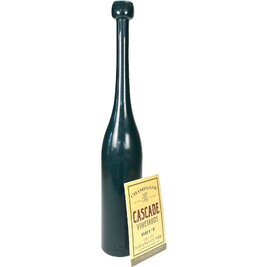
Meeting with photographer Camille LA VERDE
Interview with Camille La Verde, circus photographs
Let’s explore the circus arts alongside Camille La Verde, who specializes in photography of jugglers and circus performers .
She lets herself be guided by her instincts to reveal and highlight "circus artists".
For several years, she has traveled to festivals and shows to capture the performances of these extraordinary artists . Her photographs are imbued with great sensitivity and a careful aesthetic, highlighting the beauty and emotion of her subjects' movements.
Her artistic approach is unique, capturing all the magic and audacity of the artistic world. I was able to chat with her about her work, her passion for the circus, and her experience as a photographer of this fascinating world.
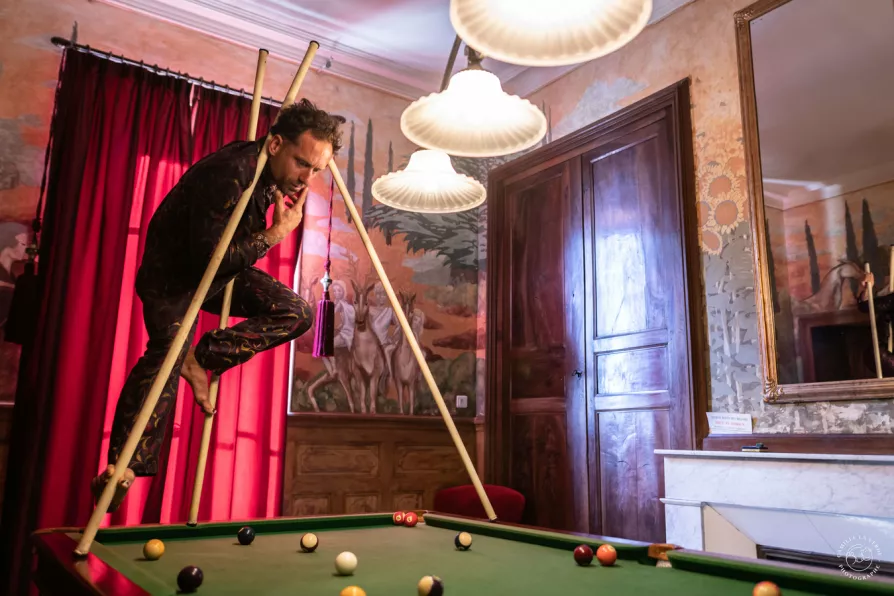
Can you briefly introduce yourself and tell us more about your background as a photographer specializing in photographing circus artists?
Yes ! My name is Camille, I am 23 years old, I am French with a tip of Italy in me. I have been a circus photographer for 2 years now, including the last one full-time. I have several passions like traveling, photography obviously, and several activities like juggling, music, sewing, knitting, reading...in between others! I'm just curious! ;)
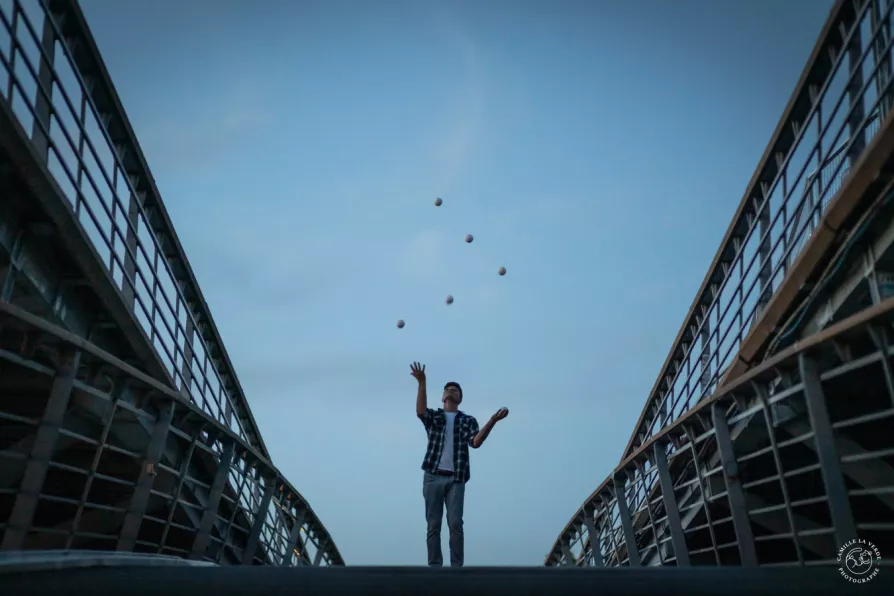
What made you interested in photography and this very particular world?
It is
a youthful passion, which I developed over time. When
I was a child, my father gave me a camera, and that's when
that it all started, self-taught. I didn't grow up in the
circus environment, but I was lucky enough to meet some great
people during the summer of 2020, who introduced me to this
world there.
I think that since then, I have not stopped taking in
photos of the different disciplines that I had the opportunity to
meet. Fun fact: I started photography from
circus by fire juggling!
Each
artist has his own way of performing.
I find that the personalities of
each one emerges through their disciplines. Before taking them
in photo (outside the show), I ask them to think about this
what they would like to do, their artistic and aesthetic visions
as well as the
rendering that they would like to have. With this information, we
together achieve what best suits their person, this
that they are.
Often there are two parts to a photoshoot: a
first where these are movements that can be repeated
in order to capture the best moment, and a more free part, where
the artist will be able to do a short improvisation sequence (or
that he will have worked on beforehand). When it comes to photography of
show, there are fewer questions to ask, other than
logistics.
The artist already does everything on stage!
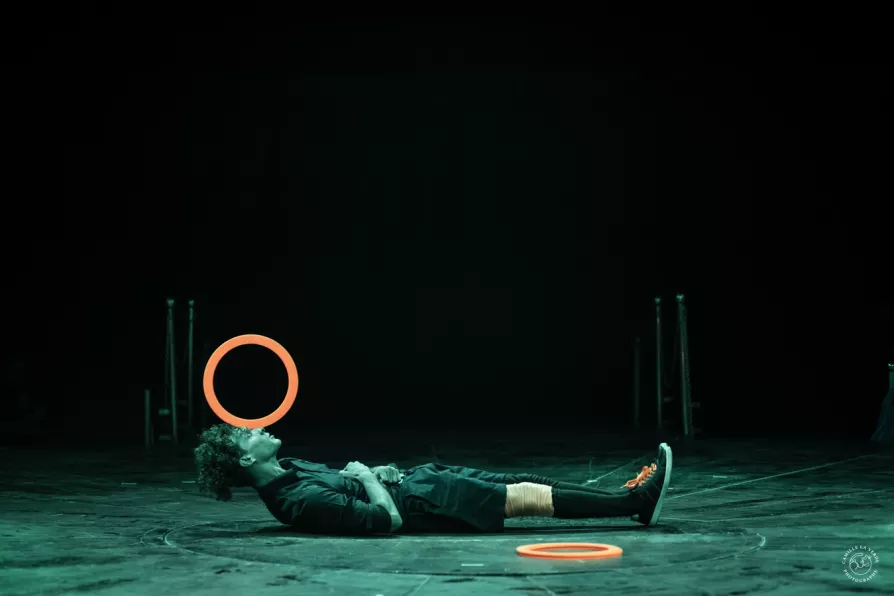
What is the most difficult performance you have photographed so far ?
That
depends on which way you look at the question! If it is a question of
"dangerousness", I tend to put myself in places
unusual for artists who do aerial work, who juggle
with fire, or even acrobats, like below for example,
It can get out of hand! (but I only do it when we are all there)
both in confidence).
If we talk about difficult in the sense of
conditions, I think of sessions in the cold or the rain, it's
exotic but it is not always a pleasure, nor for
me, nor for the artist! I remember one time when I
photographed the performance of a fire juggling company during
which I intensely felt the heat of a large flame
spat and then almost took fireworks on it (maybe that
I was just too close...!).
But without being difficult, there is
also all the good times that make us laugh! Like the
buttocks in the water when it rained (it happens more often than you think)
think), or even in a swimming pool or standing on
billiards and other furniture!
I have
in mind some photo projects to carry out in places
improbable, a little more perilous like in a hot air balloon, under
the seas...
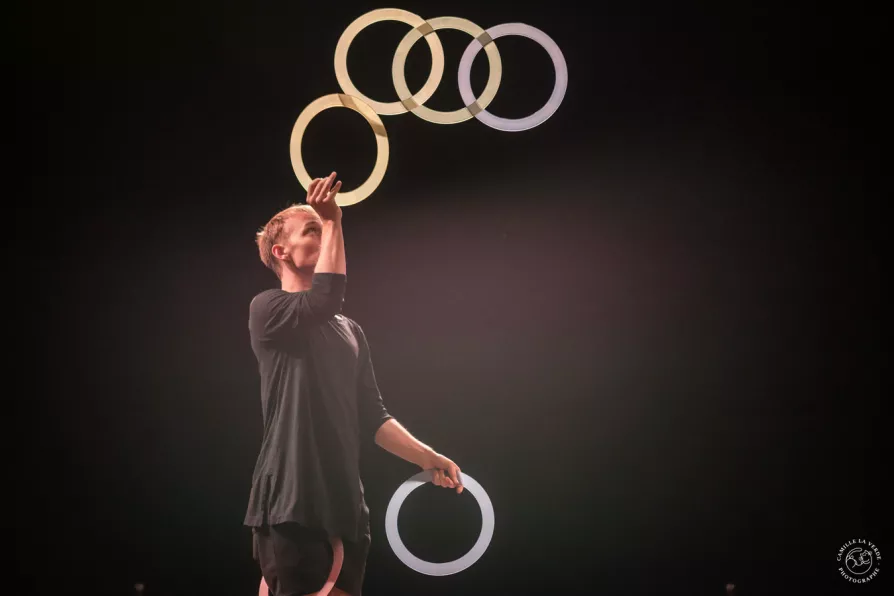
How do you manage the technical challenges of circus photography, such as light and movement?
I
never really had any trouble photographing movement, but
Over time I have developed a certain ease in grasping what
instant capture, which makes things much easier! More
I observe a discipline, the better I can take a picture of it, by
anticipation of the movement that will be carried out.
I ask
also a lot to the artists with whom I collaborate
if they can guide me to know what is the most beautiful moment of
their movement (for example having beautiful geometric lines or
pay attention to the tips of your toes).
This is the whole difference between photography and video,
because photography is a stopping of time. Concerning light,
I learn through my experiences. Playing with light is
adapt to the environment
ambient, when it is natural. When it is artificial,
It's often more delicate but again, each experience
is enriching and therefore, nourishes my know-how.
I
I will embark on training around stage lighting in order to
to perfect my “studio” sessions.
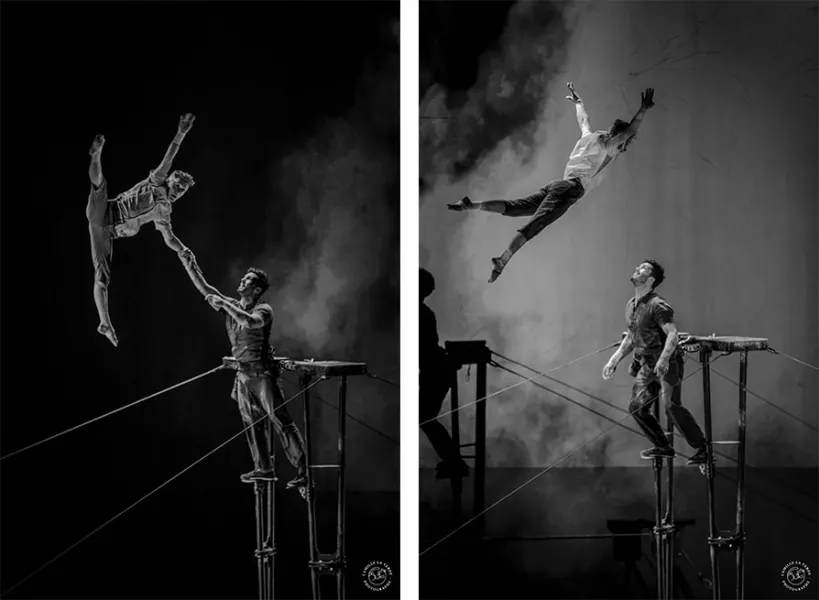
Your models often have strong expressions in your images. How Do you communicate with them to bring this kind of thing out?
I I'm not sure I'm responsible for their expressions. When a artist is fully in the action of his discipline, these are these emotions that spring up, I capture what seems to me to be the most faithful to each one. The most important thing is that the artist feels in trust with me and with the goal, that he forgets it in order to stay Focus on your practice. That's the secret to being photogenic!
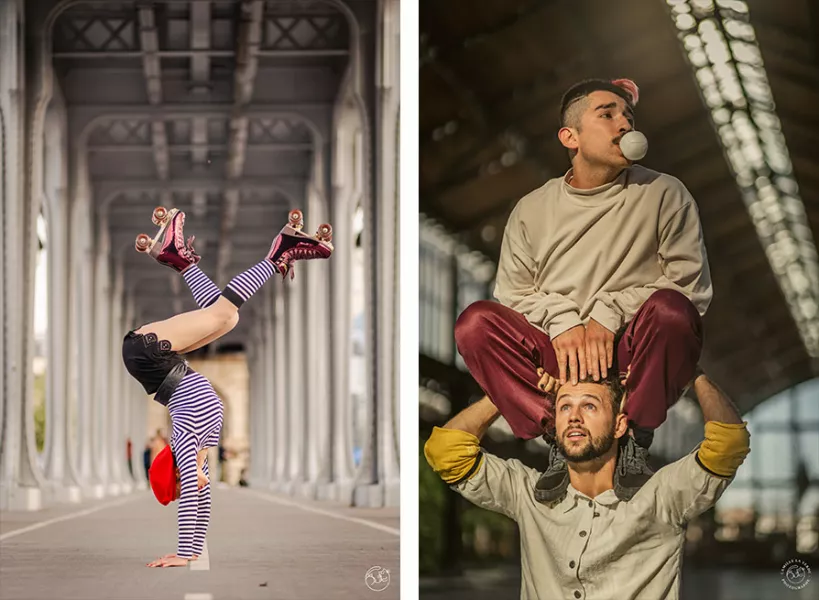
What is your favorite step in making a shoot and why?
In
a shooting, there are roughly 3 parts: before, during,
and the aftermath. The during is my favorite part. The meeting
artistic and human exchange are obviously aspects
essential. There are also moments of concentration, laughter,
life...
And
then, these are moments of creation, sometimes laboratories
wacky! For my part, it is also a systematic learning,
and at the risk of repeating myself, the more I observe a discipline, the more I
gain confidence in being able to take her picture again.
This
which I particularly like in circus photography,
It is the discovery of sublime places in which I would not have otherwise
I have never had the idea of treading, and therefore the framework in which we
let's do the session which is during the "During".
When the
time permitting, I enjoy exchanging
around a drink, ideally before getting comfortable,
getting to know each other always has a great impact on the
session and what I get, so we come back to the most important thing:
be comfortable!
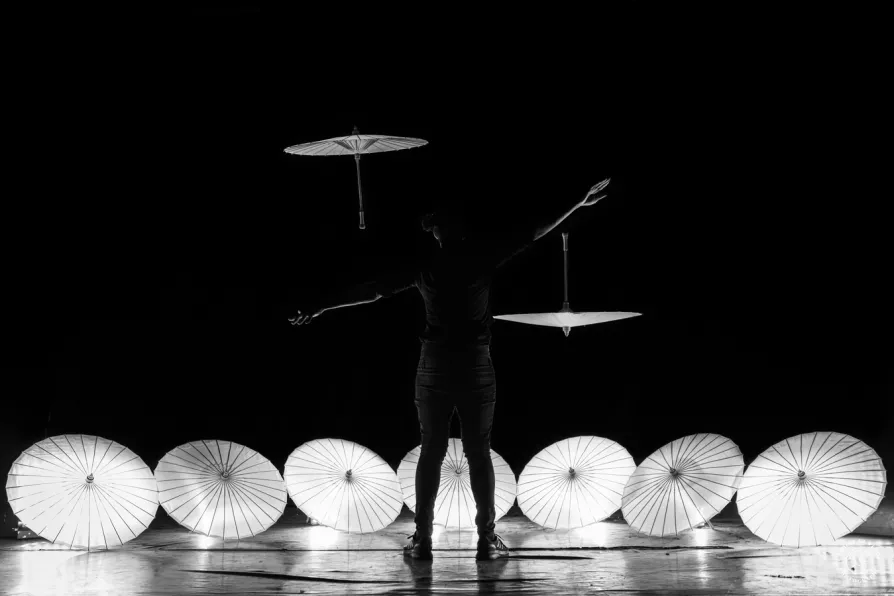
A photo travel anecdote?
THE The anecdotes that come to mind right away are mostly places fun places where I had the chance to take pictures. old castles, swimming pools, smoke-filled hangars... The current year will be spent on the roads for 6 months at minimum. This will fill my notebook with crazy anecdotes.
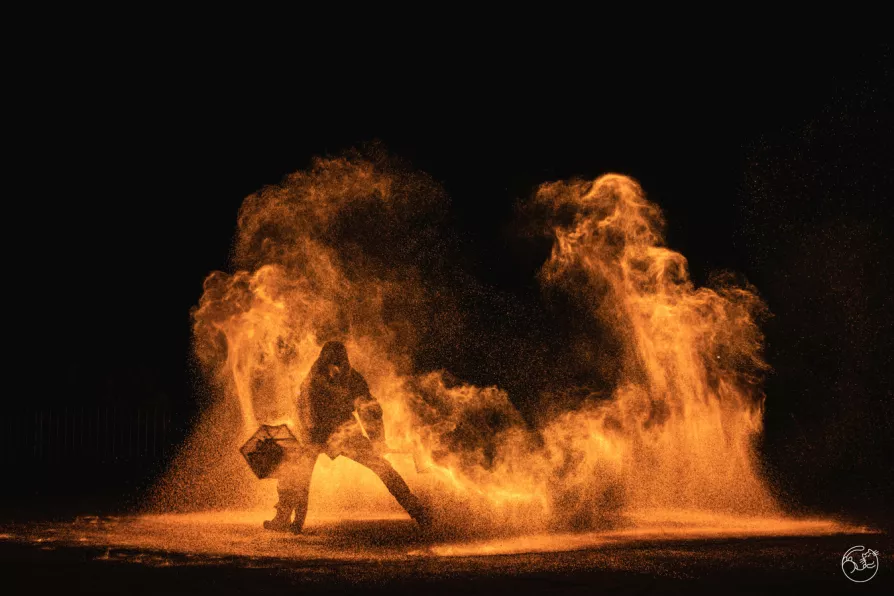
W hat What equipment do you use for your photos?
I use
a Sony A7RIII as a camera, and a Canon
85mm 1.8 as a lens mainly. I also have a 24mm 1.4 from Sigma
and a Canon 50mm 1.8,
but I use them more occasionally.
What What are your future plans (if you can talk about them)?
Several Actually, mainly the journey. It's one of the parts that I enjoy the most about my job, whether in France or abroad abroad, it's a driving force even. On the photography side, I'm on a serial photography project that will take several years. It advance little by little, but shhhh, it's a surprise!
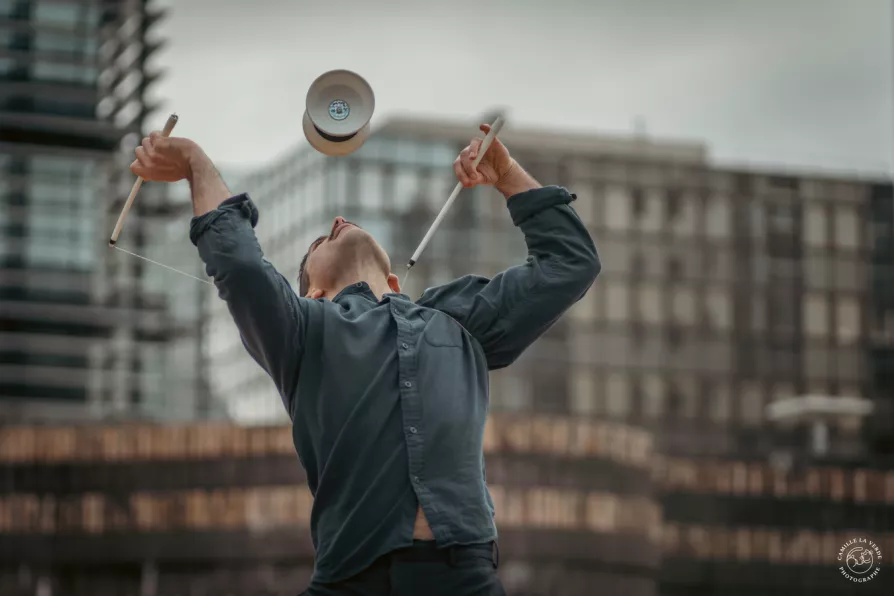
How can your potential customers contact you?
- Instagram: @camillelaverde
- Telephone: +33 7 68 86 83 15
- Email: camillelaverde@pm.me
Thank you, Camille, for taking the time to answer my questions. Thank you also for lending us such beautiful photos to illustrate the interview :-). Many thanks to the artists in the photos.
Comments
!Be the First to comment!

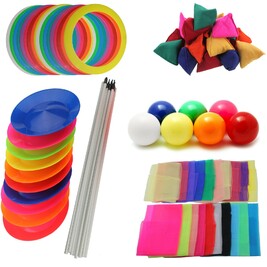
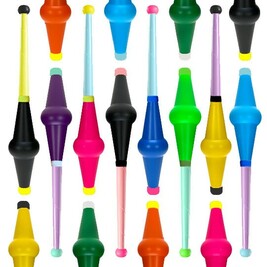
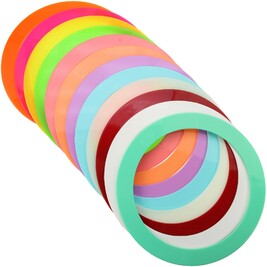
![TTS 67mm [75g] TTS 67mm [75g]](https://photos.netjuggler.net/Balle-TTS-67mm/minia/BalleTTS67mm75g3.jpg)
